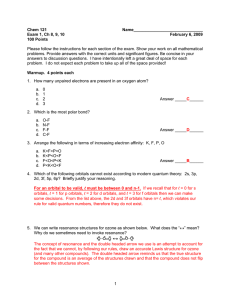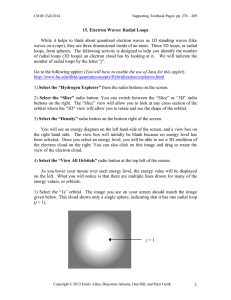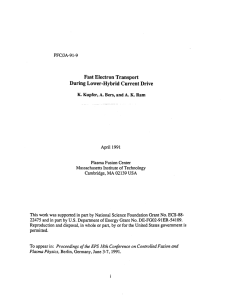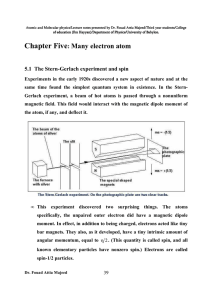CHEM 121 Name_________________________________________ Quiz 2
advertisement
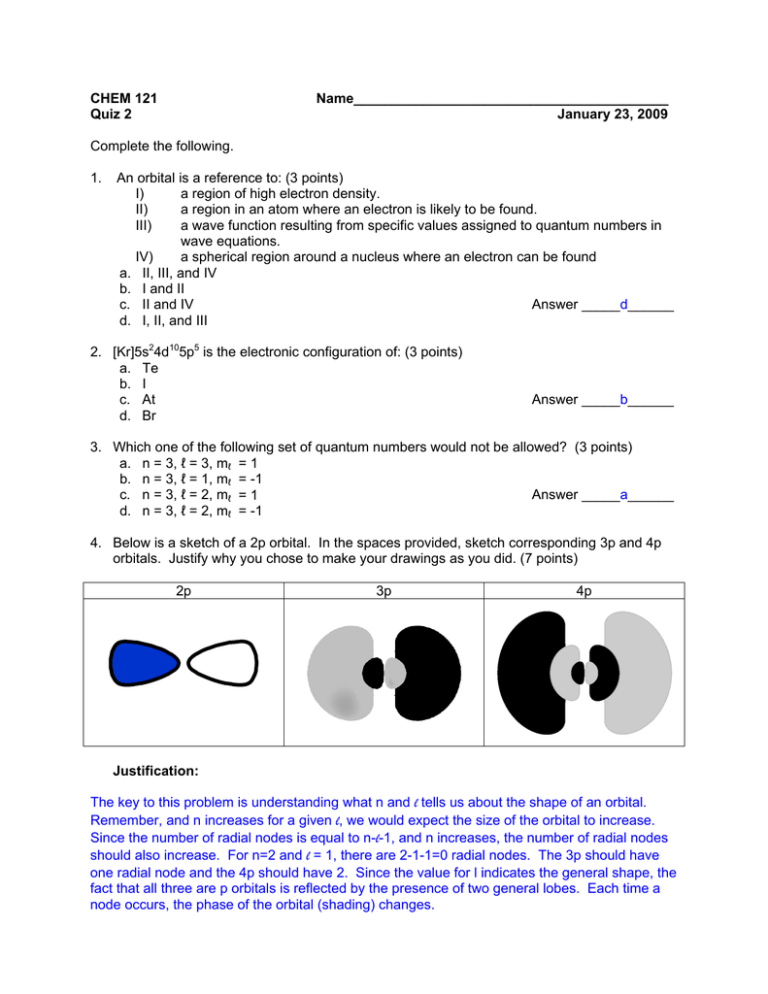
CHEM 121 Quiz 2 Name_________________________________________ January 23, 2009 Complete the following. 1. An orbital is a reference to: (3 points) I) a region of high electron density. II) a region in an atom where an electron is likely to be found. III) a wave function resulting from specific values assigned to quantum numbers in wave equations. IV) a spherical region around a nucleus where an electron can be found a. II, III, and IV b. I and II Answer _____d______ c. II and IV d. I, II, and III 2. [Kr]5s24d105p5 is the electronic configuration of: (3 points) a. Te b. I c. At d. Br Answer _____b______ 3. Which one of the following set of quantum numbers would not be allowed? (3 points) a. n = 3, ℓ = 3, mℓ = 1 b. n = 3, ℓ = 1, mℓ = -1 Answer _____a______ c. n = 3, ℓ = 2, mℓ = 1 d. n = 3, ℓ = 2, mℓ = -1 4. Below is a sketch of a 2p orbital. In the spaces provided, sketch corresponding 3p and 4p orbitals. Justify why you chose to make your drawings as you did. (7 points) 2p 3p 4p Justification: The key to this problem is understanding what n and l tells us about the shape of an orbital. Remember, and n increases for a given l, we would expect the size of the orbital to increase. Since the number of radial nodes is equal to n-l-1, and n increases, the number of radial nodes should also increase. For n=2 and l = 1, there are 2-1-1=0 radial nodes. The 3p should have one radial node and the 4p should have 2. Since the value for l indicates the general shape, the fact that all three are p orbitals is reflected by the presence of two general lobes. Each time a node occurs, the phase of the orbital (shading) changes. 5. Using spectroscopic “shorthand” notation, write the electron configuration for the following species. Indicate the number of unpaired electrons in each. (3 points each) a. silicon (Si) electron configuration: [Ne]3s23p2 # of unpaired electrons: 2 (2 of the 2p orbitals hold one electron each) b. selenium (Se) electron configuration: [Ar]4s23d104p4 # of unpaired electrons: 2 (1 of the 2p orbitals hold two electrons, the other two hold one each) c. fluoride ion (F-) electron configuration: 1s22s22p6 or [Ne] # of unpaired electrons: 0 (the reduction of F to F- produces noble gas configuration)
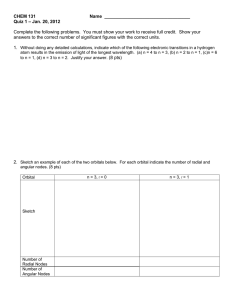
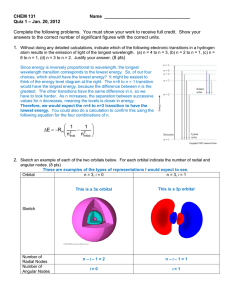

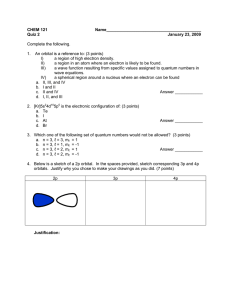
![6) cobalt [Ar] 4s 2 3d 7](http://s2.studylib.net/store/data/009918562_1-1950b3428f2f6bf78209e86f923b4abf-300x300.png)


